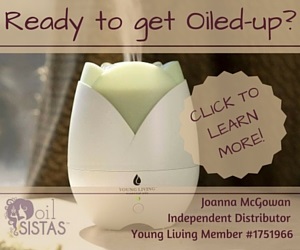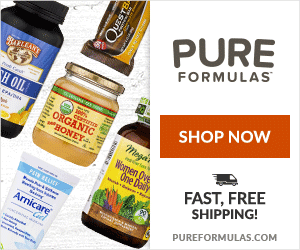This is the final post in the four-part Autism and Dental Surgery Series, written about my experience when my son Christopher – who has severe autism and is nonverbal – had to have dental surgery. If you missed the other posts, please check out: Autism and Dental Surgery, Anesthesia and Medication, and What to Expect the Day of Surgery.
I’m sorry that it took me so long to write this final post – that pesky full time job has been getting in the way of my writing (I’ve been having to take home a lot of work lately). But I figured since I already covered the meat of the surgery in the other posts that this wasn’t as urgent. This post deals with everyday dental health. This can be extremely tricky for kids on the autism spectrum who may have limited diets, may have sensory issues, or may not be able to tell you if they are in pain.
When Christopher was really little, brushing his teeth was nearly impossible. My husband and I would have to hold him down and he would either close his mouth or shake his head wildly. We didn’t want the experience to be traumatic, and we certainly didn’t want to hurt him with the toothbrush.
At the suggestion of our ABA therapist, we purchased these disposable oral swabs. It is basically a sponge on a stick. This was a great idea, and it worked perfectly because there was no hard edge like a toothbrush – we could just put a dab of toothpaste on and basically shove it in his mouth. This helped Christopher get used to the idea and if he shook his head around he didn’t get hurt. I ordered a box of 250 and we used it for about 4 months while he got used to the brushing, and then we switched to a toothbrush when he was comfortable.
Now, Christopher is able to use a regular toothbrush. Even if your child is sensitive, don’t give up. There
are a lot of good options to try. Some children with sensory issues prefer a vibrating toothbrush,
like this one
. Of course, some kids with sensory issues can’t tolerate the vibration. There are also traditional toothbrushes that are softer and kid friendly, like this organic toothbrush
or this Bendable Training Toothbrush
. If it seems impossible, keep at it and do the best you can. We have every therapist working with Christopher incorporate tooth brushing into his program so that we are covered for those times we just can’t get to the back teeth or he just keeps trying to suck the toothpaste.
We haven’t had much luck with flossing, but it is important to try to get the food out from between
the teeth, and to use the right products. Some flosses contain chemicals and fluoride.
For Christopher, we’ve been using Brush Buddies Monkey Flossers
(they also make Justin Bieber flossers
, if that’s your thing). It doesn’t specifically say that they are fluoride-free, but I contacted the company and they said that these flossers do NOT contain fluoride. For regular string floss, the rest of my family uses Dr. Tung’s Smart Floss
(you can probably pick it up at your local health food store, but I’ve found the multipacks that are available on Amazon
to be the most economical).
Of course we can’t forget the actual toothpaste. If you are trying to avoid fluoride, you’ve probably seen the fluoride-free baby toothpastes and you may or may not have noticed that they also contain a lot of crappy ingredients – sodium lauryl sulphate, saccharin, colored dyes. Other options do exist, but they are usually more expensive than regular old $1 toothpaste.
You always have the option to make your own. If you want to go that route, here are 3 great recipes. You can put them in a jelly jar and dip your toothpaste, or you can get portable squeeze tubes
to make them more like traditional toothpaste.
- Nourishing Simplicity’s Homemade Toothpaste made with Dr. Bronner’s soap
- Creative Christian Mama’s Homemade Toothpaste with olive oil and coconut oil
- Red and Honey’s Homemade Toothpaste with clay and coconut oil
But if you don’t have the time or energy for that at the moment, here are some non-toxic options.
My family uses Earth Paste toothpaste. It only has a few totally natural ingredients (clay, xylitol, essential oils, and salt), so it is safe to swallow. It is also an effective cleaner and is antibacterial. It comes in Cinnamon, Wintergreen, Lemon Twist, and Peppermint (Lemon Twist
is the flavor geared toward kids but my kids like Wintergreen
). I buy the multipack
because this is the most cost effective. Weleda also makes a variety of safe toothpastes – Calendula
, Natural Salt
, and Plant Gel
– and kids might like this kind better because it tastes sweet and looks more like regular toothpaste (the Earthpaste, because it has no coloring, is brownish). I use the calendula flavor for my kids and you can pick it up at your local health food store or on Amazon.

I love love love Living Libations
. A friend told me about the company and I indulge in their beauty products when I get some extra birthday or holiday money. Their dental products like Neem Enamelizer Liquid, Yogi Tooth Serum, and Healthy Gum Drops are amazing! But, it is pricey and you will be paying for shipping from Canada. When we first started brushing Christopher’s teeth using the oral swabs, the only thing he would let us put in his mouth was their Wild Child Healthy Gum Drops.
I’m sure there are a lot more healthy dental care choices, but these are a few examples that we’ve had success with. Are there any other dental products that you like? Please share!
Hopefully, if your child had or has an upcoming dental surgery, you’ve found the Autism and Dental Surgery series helpful. If you missed any of it, please check out: Autism and Dental Surgery, Anesthesia and Medication, and What to Expect the Day of Surgery. Please post comments if you have any questions that were not addressed or have anything to add!
Happy Brushing!






 My autism journey has changed the way I live and care for my family. I am passionate about nontoxic products, natural remedies, grain-free nutrition, essential oils, and healing the symptoms known as autism. This is a space for anyone aspiring toward cleaner, healthier living.
XO Joanna
My autism journey has changed the way I live and care for my family. I am passionate about nontoxic products, natural remedies, grain-free nutrition, essential oils, and healing the symptoms known as autism. This is a space for anyone aspiring toward cleaner, healthier living.
XO Joanna





